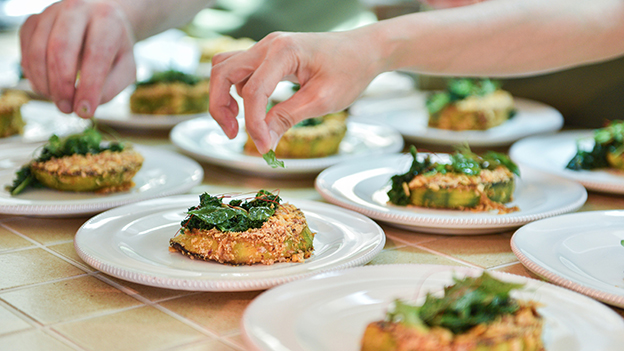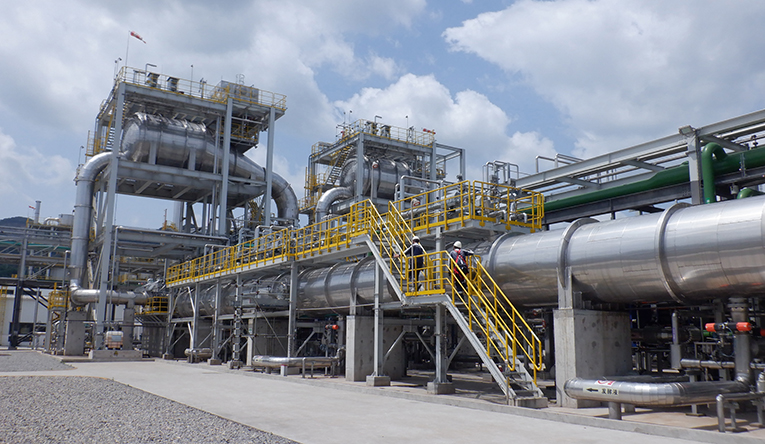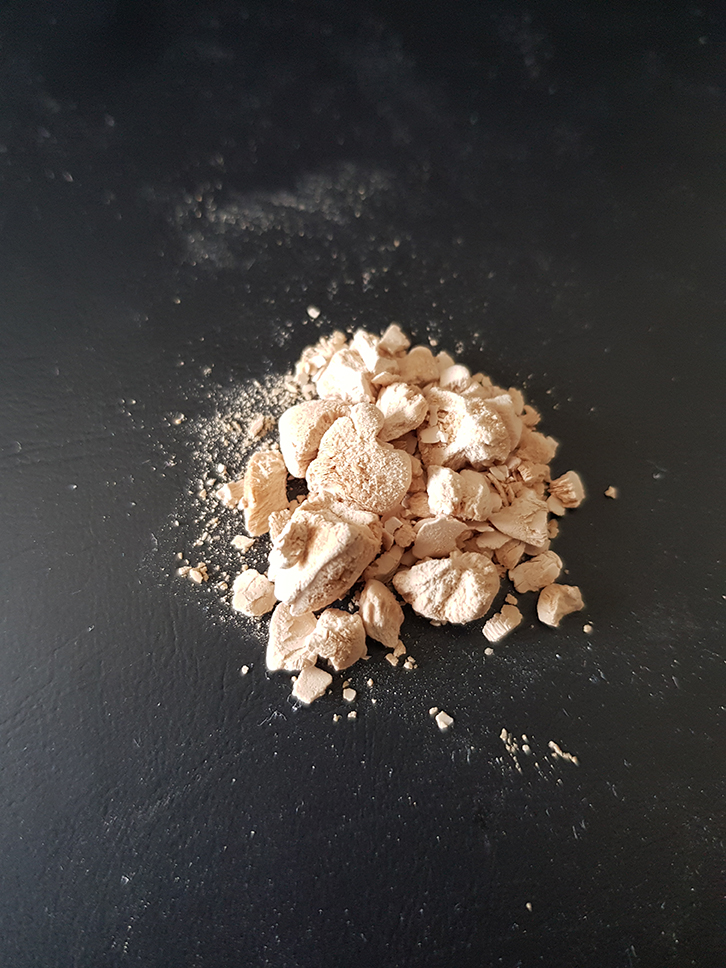

Positive atmosphere
With numerous startups globally now looking at producing proteins from thin air, Louise Davis lifts the lid on a NASA concept that has spawned new interest as a carbon-neutral source of food for both astronauts and Earthlings
The case for air-based proteins is compelling. Creating large amounts of sustainably produced food essentially from ‘nothing’ conjures up images of Biblical stories of loaves and fishes. Taking the concept further and using waste products such as CO2 to create these foods just sounds too good to be true. And, as with anything in such a nascent sector, it’s sensible to approach some of the ‘OTT’ headlines regarding air proteins with a healthy dose of skepticism. That said, producing proteins from biomass fermentation – which is largely what we are talking about when we say ‘air proteins’ – is not new. Quorn, one of the first commercial single-cell proteins of this kind, has been on the market since the 1980s, and many of the solutions detailed here are inspired by 1960s’ NASA technology.
So, are ‘air proteins’ simply Quorn-type products with a new name? How do they differ from other alt proteins being produced in similar ways – such as cultivated meat? And could air-based foods revolutionize global food chains by producing low-cost nutrition sustainably? Let’s start by addressing the nomenclature.

protein, 20-25% carbohydrates, and 5-10% fat
A load of hot air?
“I don’t think of us as being in the air-based foods sector,” begins David Tze, CEO of NovoNutrients, the San Francisco Bay Area firm whose ‘food and feed from CO2’ technology is taking off at a rapid rate. “That’s just marketing talk. Air is comprised of various gases (nitrogen, oxygen, argon, carbon dioxide, hydrogen, plus neon, helium, methane and krypton) in different concentrations. In practice, companies in this field are unlikely to have projects that involve obtaining CO2 or H2 from the air in the next decade(s). There are only negligible amounts of CO2 and H2 in the air. CO2 is too expensive to obtain through direct air capture. Meanwhile, hydrogen and oxygen will be sourced from electrolysis of water or more affordable industrial gas sources. I believe the appropriate category is ‘gas-fermented ingredients’, although the label may not sound as sexy!”
NovoNutrients’ method uses microbes to convert CO2 and hydrogen into protein. “Our technology puts the world’s most abundant and inexpensive inputs – mixed gases, rather than purified ones – into proprietary, high-efficiency gas bioreactors,” Tze explains. Although growing products inside bioreactors sounds similar to producing cultivated meat, Tze notes considerable differences in approach and market potential. “Cultivated is produced by culturing animal cells in a nutrient-rich medium that includes amino acids, sugars, vitamins, minerals, fatty acids, and growth factors. However, the costs of those substances can be vastly higher than those of our inorganic gases and inputs.”
Regarding its own product pathway, NovoNutrients claims to have already produced ‘beef-quality’ protein. “Our product data reference sheets show crude protein levels on an ‘as is’ basis of 72-82%, which is accounted for almost entirely by amino acids rather than other nitrogen,” Tze says. “We also have 100% in-vitro protein digestibility. When compared to beef, which has a PDCAAS of 1.14 (untruncated, pattern for ages +3), our product’s PDCAAS is 1.14-1.20. Furthermore, our product contains significant amounts of B vitamins and other vitamins, as well as modest levels of fat and minerals.”

Tze reports that early indications suggest the protein may be versatile, and different inputs may produce versions of the protein that are suitable for particular types of food products.
In terms of getting final products onto plates, Tze says the business model itself is not complicated. “We are a B2B technology company that provides ingredients and additives. We license our technology to manufacturers, assist with project financing, and arrange long-term purchase agreements as needed,” he continues. But Tze also adds that, “Unless you have a monopoly, there is always a trade-off between obtaining the largest market share and achieving the most relative value capture. Other companies in this space focus on the latter, striving to get as close to the consumer as possible and therefore needing to span a cumbersomely large part of the value chain. Our fundamental philosophy is the opposite. We believe we should focus on our core competencies of tech and business development, work with the greatest number of emitters, partner with many food and feed formulators instead of competing with them – all to maximize the global scale of our technology. Each company tells its investors a different story and then is bound to live it for at least the next decade. This is not an area that allows for much flexibility.”
The next part of NovoNutrients’ own story involves pilot-scale plant development. “We have signed a technology development agreement with Woodside, Australia’s largest energy company, which goes far beyond just piloting,” Tze says. “Throughout most of 2024, the pilot will produce large samples and data to confirm the readiness of the technology to advance. Data collected will be used by partners to reach a final investment decision on their specific commercial demonstration projects. We expect to surpass, in dramatic fashion, other gas fermentation companies, both in terms of product quality and productivity (grams per liter per hour) at the pilot scale and beyond.”
The solar system
One of these other gas-fermentation companies is the Finnish firm, Solar Foods, which describes its single-cell protein, ‘Solein’, as “the mother of all proteins”. Well used to explaining to laypeople how his magic-sounding process works, the company’s CEO, Pasi Vainikka offers a concise overview of his technology. “We are generating hydrogen by using electricity to split water,” he says. “And in that electrolysis process, the electrical energy is charged in the chemical form of hydrogen. We feed this hydrogen and CO2 into a fermenter, where we have our microbial culture. And the microbes are quite specific in the sense that they are hydrogen-oxidizing – so they eat hydrogen for energy instead of using sunlight or eating sugars. So, cold-gas fermentation is what we do, and the organism that grows on this basis is our product, Solein.”
Similar to NovoNutrients, Solar Foods has taken a proprietary approach – in part out of necessity, according to Vainikka: “We have built our own bioreactors, for instance, because nobody else has built such devices where we could produce our own organism.
What we create is effectively normal food but a completely new species
“The technology, the factory and how the growth conditions are arranged is all new and does not exist elsewhere,” Vainikka reveals. “Of course, there are pilots and laboratory condition projects where similar techniques are available, but we believe we are the first big company to industrialize this. The organism itself is also new and was previously unknown. And then we have some tricks up our sleeve in terms of how we do the cultivation. What we create is effectively normal food but a completely new species.”

Vainikka is putting his money where his mouth is in terms of commercializing his product. “To prove scalability, we need to build a factory,” he states. “And that’s why we have invested €40 million for a commercial factory in Helsinki, which will be operational at the end of this year.”
With scalability being tackled, the obvious next question surrounds the issue of sustainability. Some companies in this sector describe their technology as a ‘win win’ for the environment, making claims of a CO2 reduction solution as well as food production technology. Vainikka urges caution here. “Our technology does reduce CO2 in the environment, but only momentarily, because when we eat the food produced with our protein, we exhale the CO2, so it’s not really a removal or CO2 sequestration technology.
“But as long as the electricity we use for our process comes from renewable energy sources, we can then claim that this protein is the most environmentally friendly form there is. The environmental footprint is about 10% compared to that of growing plants and 1% compared to that of meat.”
Unlike some players in this field, Vainikka is in a position to address what end products made with his ‘air protein’ will actually taste like. Solar Foods recently conducted its first taste testing for Solein-based products (somewhat inevitably in Singapore) and Vainikka reports great success. “It was an amazing event. We had a multiple-course menu using our ingredient to serve very different functions.” Off the back of that success, Solar Foods announced a gelato product made with Solein will shortly be on sale to consumers in Singapore.
It also recently revealed that it has an agreement with Japanese company, Ajinomoto, to develop products using Solein. The fruits of this partnership will be launched in Singapore first. “It [Singapore] has the fastest and most efficient regulatory process. And we will be coming on the market via regulatory approval as an ingredient.”
Like many in alt proteins, Vainikka is frustrated with the bureaucracy that mean it’s more efficient to head to markets such as Singapore before being able to crack his home territory. “The difference [between Singapore and the EU] is that when you submit your dossier, in Singapore, they read it. We sent a dossier to the EC two years ago, and they have still not started to read it. It’s a bureaucratic nightmare – the system doesn’t add value, and it doesn’t help product safety.”
Feed before food
Another way to market for ‘air-based’ protein products is to go after the animal/aquaculture feed sectors first, where legislation often isn’t so much of a hurdle as it is for human foods. Calysta is one of the pioneers here. In October 2022, as part of a JV with Adisseo (dubbed ‘Calysseo’) it switched on ‘the world’s first industrial-scale facility to produce FeedKind, a protein ingredient that needs ‘no animal or plant matter to produce’. The plant will initially produce 20,000 tons of protein a year from the facility in Chongqing, China for the fish and feed-stock markets. Plans are also in place for the JV to build another facility, this time in Saudi Arabia.
Offering an overview of Calysta’s technology, Geoff Bryant, CTO, says, “At its simplest form, our technology takes what nature has already done and places it in the perfect environment for growth. We produce protein by feeding microbes gaseous carbon rather than carbon in the form of sugars. The advantage of this is that we don’t need land or photosynthesis to produce feed-stock, we use very little water and require no animal or plant ingredients.”

Bryant says Calysta acquired the base technology in 2014 from Norway’s BioProtein, which had spent decades creating the base biomass fermentation process. “What we did is further improve it. But in this industry, you don’t do anything unless you can do it at scale. Our patent-protected fermentation technology can do exactly that – and that’s why we’ve been able to build our first large-scale plant in China.
“We use natural gas as our feed-stock for several reasons, one of which is that methane naturally provides both the carbon and energy source (hydrogen) that the fermentation needs. Combined with a naturally occurring microbe that is adept at processing this, it’s a very elegant and simple process.
“Typically, other companies operating in this space say they’re using CO2 as the feed-stock,” Bryant continues. “This is more challenging because you’re dealing with a much more complex mix of gases. The CO2 would need to be mixed with both hydrogen and oxygen. Scaling up a process with such a complex mix of gases is more challenging even before you start mixing to get the nutrients to the growing cells safely.”
So, how does Calysta’s approach differ to the technology being used to produce cultivated meat? “It’s a totally different process,” Bryant states. “The key difference, aside from the enormous scale Calysta can operate at in comparison to the much more painstaking process cultivated meat, is that they still rely on animal cells to work. Not only are the feed-stocks more expensive, the process is also complex, and the design and size of the fermenter is constrained as a result.
“The process is also slower – mammalian cells do not grow quickly, which means you must prevent contamination by microorganisms that grow faster in the same media.”
Overall, Bryant feels the scope for air-based proteins is far bigger than that of cultivated meat. “Given our protein is entirely additive to the supply chain, its potential is enormous,” he confirms.
Looking ahead, the plan is to begin moving away from using natural gas as feed-stock and using carbon capture technology. “Our fermentation, like most other aerobic microbes, produces CO2 as a by-product; we plan to capture and store this at source. Ultimately, our aim is to migrate to biomethane when the technology matures, which can be produced by capturing CO2 with hydrogen outside our fermenter, so has absolutely no impact on our core process.”
Bryant also hints of a move from aquaculture products into the human foods sector. “We can’t discuss specifics but we are working toward meeting regulatory requirements for this market. And we are currently speaking to several food ingredient manufacturers, so you’ll have to watch this space!”
Fishing forecast
Another key player in developing air-based products for the fish-feed sector is the Norwegian firm Gas2Feed. “The basis of the concept is to use exotic ‘Knallgas’ bacteria to produce a source of protein primarily for feeding salmon,” says Dr Vukasin Draganovic, Business Development Director. “The bacteria that recently gained a lot of attention are named after the gases these microbes consume. Hydrogen, oxygen, and carbon dioxide are required to obtain new cellular material, which is itself a protein biomass.”
Draganovic explains that there’s a mix of proprietary and high-end off-the-shelf equipment deployed. “Our reactor was created to provide optimal utilization and mass transfer of three gases – not an easy task considering that too harsh conditions can potentially damage cell membranes and reduce the growth rate of the microbes. All the downstream equipment to recover the biomass from the fermentation broth is state-of-the-art standard industrial equipment.”

The fish-feed sector is a natural market for a Norwegian firm, given the region’s aquaculture industry. “We aim to have a product specifically designed as a protein-rich ingredient for feeding salmon,” says Draganovic. “We are optimizing processing conditions and operational steps to tailor the product to this fish species.” The firm’s pilot plant is fully operational (it runs on a scale capable of producing batches of tens of kilograms). “Our next-phase reactor under construction will have an output of about 10 tons of protein product annually. The first commercial production of 20,000 ton a year is scheduled for 2026,” a proud Draganovic reveals.
Ultimately, Draganovic has his sights set on producing food for humans, too. “It could compete with soy or whey in the food sector,” he says. “The Knallgas protein must
go through the regulatory process but we are already in dialog with a food-sector company.”
Interestingly, he also regards Gas2Feed’s technology as potentially complementary to cultivated meat techniques. “We both grow cells in the reactor – just different kinds
of cells. The mammalian cell cultures require media to grow which is in a sense a mixture of amino acids, glucose, and other nutrients. The challenge with cultivated meat technology is to create a media based on plant raw materials or other sustainable resources, such as microbes.
“This is how these two technologies can be very complementary,” Draganovic notes. “Protein biomass produced by Knallgas bacteria can be fitted and customized to feed mammalian cells. Coupling the two could be the ultimate solution to produce food in a sustainable manner.”
Deep thinking
Echoing this prediction, Pete Rowe, CEO & Co-founder of Deep Branch, believes that, due to the diverse applications of gas-fermented products, they could end up with an enormous chunk of the global foods market. “The process produces a protein-rich ingredient comparable to other concentrates used in both food and animal feed,” he says. “It’s possible to use these ingredients in a broad range of applications, such as the current plant-based alternatives. This is achieved by combining them with other ingredients and additives to create products such as meat and dairy analogs or other products benefiting from a high protein content.”
Deep Branch’s ‘(R)evolve’ platform uses a similar process to conventional fermentation – apart from, instead of using sugar as a source of carbon and energy, its microbes use a mixture of CO2, hydrogen, and oxygen. “These gases are dissolved into a solution containing water, other nutrients, and our microbes. The microbes use the gases and other nutrients to grow, accumulating protein as they do so,” details Rowe. “The result is a milk-like protein-rich broth that we dry into powder format.” Its Proton product was initially developed for the animal feed market. “Our real differentiator is the combination of the microbes we use for our process, reactor configuration, and process conditions (such as gas composition, temperature, and pH). By tightly controlling these elements, we can unlock high yields of highly nutritional protein cost-effectively.”
With regard to other companies using this same type of technology to create single-cell proteins, Rowe reports that it’s too early to cite major differentiators on the technology side. “We’re part of a cohort of companies commercializing technology based on microbes that utilize carbon dioxide. Without products being on the market or technology being deployed commercially, it’s difficult to highlight clear differences in technological strategy at this stage.
“The primary difference in strategy is how these companies position themselves within the value chain, both regarding sourcing feed-stocks and application and market development,” Rowe adds. “Our primary focus is using the high protein content of Proton to meet the nutritional demands of animal diets that require a lot of protein, a good example being salmon. Other players in the space are aiming primarily at human food applications, an area in which we receive much inbound interest and are naturally interested in exploring ourselves through a new range of products.”
A recent Deep Branch success story was the commissioning of its mobile pilot unit (MPU), the objective of which was to test different industrial feed-stocks on location. “We didn’t want to go straight to a fixed pilot or market-launch facility only to realize there was an issue with the gas supply or another technological challenge to overcome,” Rowe explains. “We learned many great insights through our MPU projects, including how the purity of gas streams makes a real difference, why impurities create larger headaches, and how gas concentrations help economics.”
If there is not a sufficiently unified voice from the industry on important matters, that will impact adoption and regulatory approval
Looking ahead, Rowe feels educating all stakeholders about single-cell proteins is essential. “There must be several players in the space to raise the profile of a new product category. And there is a risk that if there is not a sufficiently unified voice from the industry on important matters, that will impact adoption and regulatory approval.
“There are also some internal challenges that we need to overcome to help the alternative protein market succeed. We must demonstrate our technology at scale, get the commercial economics right, and secure funding to help us achieve our vision of helping overcome the climate crisis and addressing biodiversity loss by elevating the global food system to meet society’s needs sustainably.”
Air max
Like Rowe, Dr Lisa Dyson, CEO of US firm Air Protein, believes air-based proteins will play a vital role in feeding people sustainably. “We’re creating the future of food,” she states. “So, new ways of making food and selling that food to purchasers of food – that is what we’re building.”

And in terms of market share, the sky is (quite literally) the limit, according to Dyson. When asked to comment on market research suggesting the value of air-based food by 2032 could reach US$100 million, she exclaims that, “Our business alone will be worth more than that!”
Explaining further, she says, “Our protein can be used to replace numerous different forms of proteins such as soy, pea protein, and meat. We have this very flexible platform to make protein and ingredients. So, the entire food industry is essentially the cap on what we can do. We’re not talking about a ‘special, unique’ type of protein – rather, it is the ability to make a drop-in replacement to all the proteins that exist in the world today.”
Unlike some in the sector, Dyson is far enough down the path to commercialization to be able to make such predictions. Air Protein made ‘the world’s first air-derived meat’ and has already used its protein-rich flour to produce the likes of chicken, beef, pork, and scallops. “We make protein (really nutritious protein) from the air, water and energy,” details Dyson, who always acknowledges the initial concept came about from NASA research. “We picked up where they left off, did a lot of R&D, and figured out how to make this economically attractive and scalable.”
Most of Air Protein’s process involves proprietary technologies but there’s some off-the-shelf kit being deployed, too. “Traditional fermenters are not suitable for air fermentation, but we are able to leverage existing fermenters and modify them in a way to make them suitable. This means it’s a straightforward process to scale.”
The company recently launched its ‘air farm’, a facility that Dyson says “demonstrates the technology and the ability to do this air fermentation at a larger scale”. And from that, Air Protein will move onto taking products to market. On that side, is the plan for Air Protein to sell its flour to the food industry or will it be producing end products (such as chicken and scallops) itself? “We will do both,” Dyson affirms. “We’ve already demonstrated our ability to make great-tasting products, and we will sell those products. But our vision is to feed the masses with nutritious, low-cost of protein. To do that we have to work with all the companies that are out there bringing food to the world.”
With that aim in mind, what is Dyson’s five-year plan? “Once we have demonstrated (by scaling the technology) that we can be one of the lowest-cost proteins on the planet and demonstrated that this protein is flexible, we want to see it used in a number of different food items that consumers are buying over and over again. We want to see consumers excited by the nutritional value and the environmental value that we deliver. And in five years’ time, we want to see this protein be well on its way to becoming ubiquitous.”
If you have any questions or would like to get in touch with us, please email info@futureofproteinproduction.com







